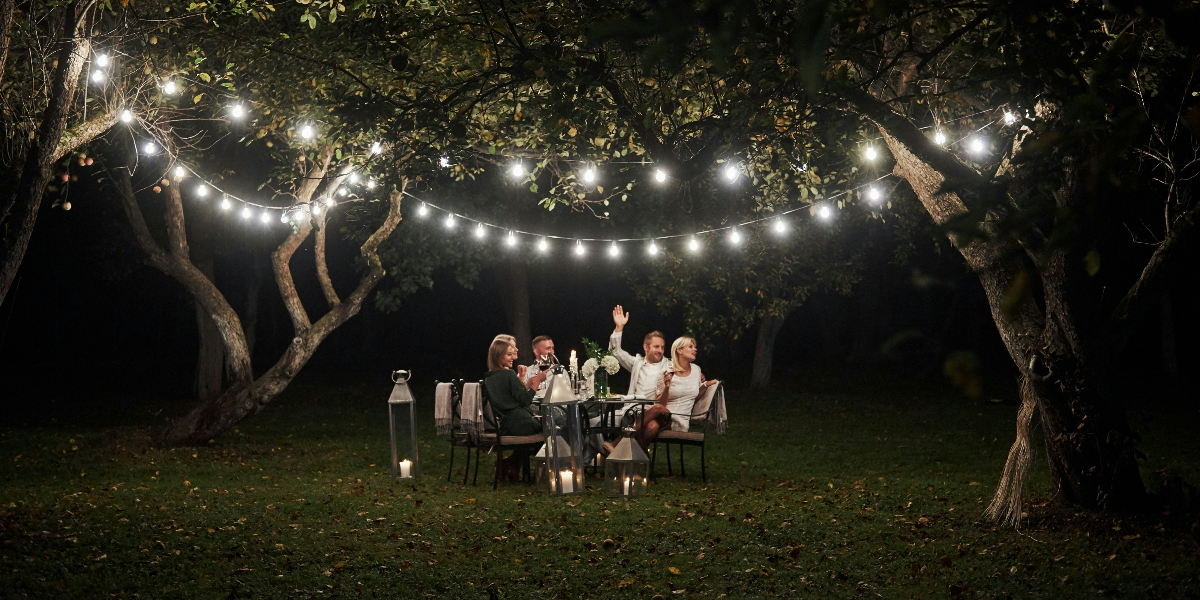Kevin Ervin Kelley, AIA, is an award-winning Architect, Experience Designer, and Cofounder of the bi-coastal strategic design firm Shook Kelley. As a lifelong advocate of bringing people together in prosocial settings, Kevin’s expertise is in studying how the environment of a place affects our behavior, perception, and decision-making. Kevin has worked closely with the leaders of many well-known companies, such as Harley-Davidson, Whole Foods, Kraft, Cadbury, The J.M. Smucker Company, and USAA, in their efforts to develop new kinds of immersive brand experiences. Kevin holds two degrees in architecture from the University of NC at Charlotte.
Below, Kevin shares five key insights from his new book, Irreplaceable: How to Create Extraordinary Places that Bring People Together. Listen to the audio version—read by Kevin himself—in the Next Big Idea App.

1. We need more bonfire moments that bring people together.
I grew up in South Florida. Not the palm tree beachside you’re thinking about, but way out in the boonies toward the Everglades swamp side. To get to my neck of the woods, you’d have to ride down a long, bumpy road that’d rattle the fillings out of your teeth and try to survive the alligators, water moccasins, and mosquitos. There wasn’t a lot to do in our little hamlet, so we’d spend our weeks, summers, and life savings building elaborate swamp buggies that looked like something out of a Mad Max movie and could traverse any terrain. Where on earth were we trying to go? The mudflats, of course.
The mudflats were the place to see and be seen in my community. However, to get to this middle-earth destination, you’d have to travel two miles out into the middle of the muddy, coffee-colored swamps to eventually reach a mound of sand that rose out of the water like a redneck Riviera resort. But it was all worth it because the highlight of our day started when the sun went down, and the bonfire pyramids went up.
As part of our weekend ritual, an hour before sunset, a self-organizing group of families, friends, and strangers would work together under the guidance of a self-appointed “bonfire master,” collecting anything that burned. We then took these sticks, twigs, and empty beer cases and created an enormous pyramid-shaped bonfire before siphoning off some gas and striking a match.
We all did our part in an unusually cooperative manner, but it was the “bonfire master”—Chief Brand or Chief Experience Officer in today’s LinkedIn world—who led the tribe and created our vibe. Not only did they have to ensure the fire didn’t grow too big or shrink down too small, but they also had to help synchronize a group of strangers to feel connected to something larger than themselves. This harmonious quality of the “group experience” is what Swiss psychiatrist Carl Jung called “participation mystique.”
2. We need to meet people at the intersection of commerce and community.
For thousands of years, people have been leaving their homes and places of work to go to the market, whether that market was the ancient agora, the bazaar, or the local farmers market, grocery store, or mall. But since the advent of the internet, smartphones, social media, and delivery apps, we no longer need to leave our homes to go shopping, buy food, get dinner, go to the movies, or find a date. We can do all these things from the push of a button in the palm of our hands.
Since the pandemic and the rise of Zoom, we no longer need to go to work, go downtown, have water bottle conversations with our teammates, or get dressed up anymore. We can stay home in our pajamas all day and night. But is this progress and convenience all good for us? Or is it possible that something meaningful, important, and connected to our hardwired happened when we left our caves and couches and met others in the public realm?
“As humans and members of a community, we learned how to interact and be civil and polite to one another by watching others in public.”
Although we went to the market to trade money for products, we also went there to trade stories, ideas, values, and cultures. We went there to see and be seen, to find friends, meet new people, and perhaps find our soul mate.
Going to the market required embracing certain social norms and rules of etiquette rules. It required presenting a public self and thinking about our social identity. As humans and members of a community, we learned how to interact and be civil and polite to one another by watching others in public.
But this civil presentation of the public self is not required online as we can say, act, and behave in any way we want with little repercussions or peer pressure; the more outlandish and polarizing, the higher the number of clicks, likes, followers, and “friends” we get. This daily online training course for how to master social media is affecting the development of our brains, behaviors, and social norms more than we realize, particularly for kids. Thus, it is critical for people to find some time and place in their lives to meet at the intersection of commerce and community.
3. We need places that provide a bigger payoff for the amount of work they require.
Most of us would agree that we’re living in a time of great change and disruption, where everything we used to do physically is being replaced by digital solutions.
According to Nasdaq, consumers will make 95 percent of their purchases online by 2040. While this prediction is great for the net worth of investors, it’s not so good for the health of our communities and local businesses that have historically lined our neighborhoods and served as public gathering points for friends, family, and strangers. As the scale and reach of online entities get bigger with the steady increase of our dollars, their cost of doing business goes down. But as local businesses lose bits and pieces of our dollars, their cost of doing business goes up, making it harder to keep their doors open. Amazon alone offers 353 million products online and takes $17 million out of the market every hour. Local shops, restaurants, and cinemas are realizing they can’t compete against the massive scale, reach, and efficiency of digital replacements. As much as they try to keep up, a steady stream are throwing in the towel and calling it quits if they haven’t already. Places can survive and thrive in the digital economy, but it requires understanding one critical aspect of humans: the work payoff ratio.
When evaluating the experience places offer, consider two broad categories. One is the moments and situations that feel like work, effort, and exertion. The other category includes the moments and situations that feel like joy, delight, and rejuvenation We call this dynamic the “work/payoff ratio,” or “WPR” for short.
“Places can survive and thrive in the digital economy, but it requires understanding one critical aspect of humans: the work payoff ratio.”
When people consider visiting a mall, furniture store, art museum, theme park, or any other place, they subconsciously ask themselves, “If I go through the effort to visit this place, what’s in it for me? I can see how the place wins by getting me on their premise, but how do I win by going there?” Far too many place-based businesses and institutions are unsympathetic about the effort required for consumers to acquire a venue’s product. But to succeed in today’s Replacement Economy, places must gain clarity on this subconscious work/payoff dynamic to ensure their moments of pleasure far outweigh their pain points.
4. We need a better understanding of how the human senses interpret our physical world.
Despite how technologically advanced our world is, the human body hasn’t evolved much in thousands of years. While our elders tell us to not judge a book by its cover—which is well-intended— it doesn’t entirely reflect the primitive parts of our brains that have had to make snap judgments for thousands of years to survive and thrive in our habitats. We’re hardwired to judge things by their covers because, in previous eras of lions, wolves, and marauding tribes, that’s how our ancestors stayed alive.
As evolved as we might seem today, this split-second context scanning and decision-making process never left us. It’s still a core part of our environmental awareness and innate survival system. While we’re not conscious of it, we prefer the world around us to be stable and predictable because it gives us a sense of control over our environment. But deep down, we know stability isn’t always possible. So, no matter where we are, we’re constantly on the lookout for contextual clues and the slightest changes in our environment. And the tools we use to engage our environments consist of our senses and our emotions.
There are six key sensory concepts. Three are listed here:
- The voluntary versus the involuntary eye. While all the senses work together to help us interpret our environment, our vision plays a major role in piloting us through the world and steering our decisions in two conceptual modes: the voluntary eye and the involuntary eye. Knowing the difference between these two modes can be incredibly helpful in understanding people’s engagement with their environment.
- Visual harmony versus visual noise. The human eye prefers visual harmony over visual noise. Part of the reason for this preference is that our body’s instinct, if not compulsion, is to try to make sense of an image, scene, or our surroundings. But when we can’t figure a scene or situation out because of the visual noise, our mind gets frustrated and our body’s energy wears down. Why does this matter? Well, if you’re a school, a museum, or a retail store, grabbing the attention of your audience is key to engagement.
- Information overload versus sensory deprivation. Humans have always preferred the beautiful over the unattractive and the stimulating over the monotonous. On a basic level, our definitions of beauty and unattractiveness haven’t changed that much throughout history or cultures. Universally, we still prefer qualities like symmetry, composition, rhythm, scale, repetition, proportion, contrast, and surprise. Why do humans seek beautiful things? The short answer is that, historically, the things we found attractive to our senses had survival value, whereas we avoided things that could harm us or threaten our existence.
Unfortunately, many venues such as the grocery store aisle, DMV, or post office often don’t qualify as places humans consider attractive, inviting, or stimulating. If anything, people are turned off and dread going to them, which is problematic for places in today’s digital alternative world. But places don’t need to be “prettified” or “intellectualized.” Instead, they need to be intuitively “experiential” and tap into our senses in a way that attracts our attention and makes us want to be there.
On any given day, we experience a wide range of environments that produce different types of sensations, feelings, emotions, and perceptions within us. One of the major factors in determining how we feel in a space is the quality and quantity of sensory stimuli we encounter, which act to either arouse or annoy us.
5. We need to learn how to build our own bonfire moments.
Over the last three decades, I’ve worked in a wide variety of industries that are, at times, beyond my expertise. But my team and I don’t really have to be an expert in our clients’ industries as much as we have to be an expert in the process of decoding how an industry operates and how our clients compete within it. Listed below is a broad overview of our four-step process, which allows us to consistently come up with breakthrough ideas that change the rules of a game and raise the bar for how an industry competes.
- The first step is extraction. The extraction phase draws out the knowledge, wisdom, and insights our clients have within them—conscious or not—about their business, industry, customers, and competitors. Knowing where to start a complex innovation assignment can be daunting, if not paralyzing. From experience, though, we know we’ll hit upon the big breakthrough ideas we need if we stick to our system and patiently explore the five fields of discovery. The five fields of discovery are as follows: management interviews, on-site observations, competitor reconnaissance, background explorations on the edges of the industry and cultural conversations.
- The second step for finding breakthrough ideas is distillation. The distillation phase entails taking all the field notes, raw data, and observational insights we uncovered in the extract phase and placing them into specific categories and buckets. These buckets include things such as design, operations, management, or consumer behavior. This organization allows us the opportunity to examine them with more objective eyes in our lab. We typically assign five people to a project, all of whom come from different backgrounds: business, social science, and design. We ask that they not coordinate their research too much or correct each other’s terminology. That’s because we want the honest, sincere first impression people have a client’s business, their operations, and a customer’s reaction to them. Whenever there are people in places, things often appear chaotic or order-less on the surface. But with enough investigation, there’s always an underlying logic and system for how things operate and how people behave in their environment. This phase aims to turn that disorder into clarity.
- The third step is the articulation phase. This phase synthesizes our best insights and ideas into a coherent strategy and game plan that builds consensus with the organizational leaders and inspires them to take action with a sense of urgency and conviction. Our goal is to get as simple and profound as possible. But achieving this profound simplicity requires combing through our ideas and detangling the knots. To expedite this process, we use a series of exercises and techniques—an innovation tool kit—to turn our patchwork of ideas into a strategic game plan.
- The fourth and final step is the crystallization phase. This is our most creative, magical, and non-linear phase. It’s where we take all our insights, findings, problems, and strategies and start manifesting these verbal and written ideas into physical, experiential concepts and tangible form and shape. Our ultimate goal is to turn complex ideas and strategies into two-second icons, symbols, and scenes—or scenarios—that executives can grasp quickly with enthusiasm and excitement. We know we’ve hit it when the executives tell us that’s what they’ve been trying to say all along.
To listen to the audio version read by author Kevin Ervin Kelley, download the Next Big Idea App today:





























